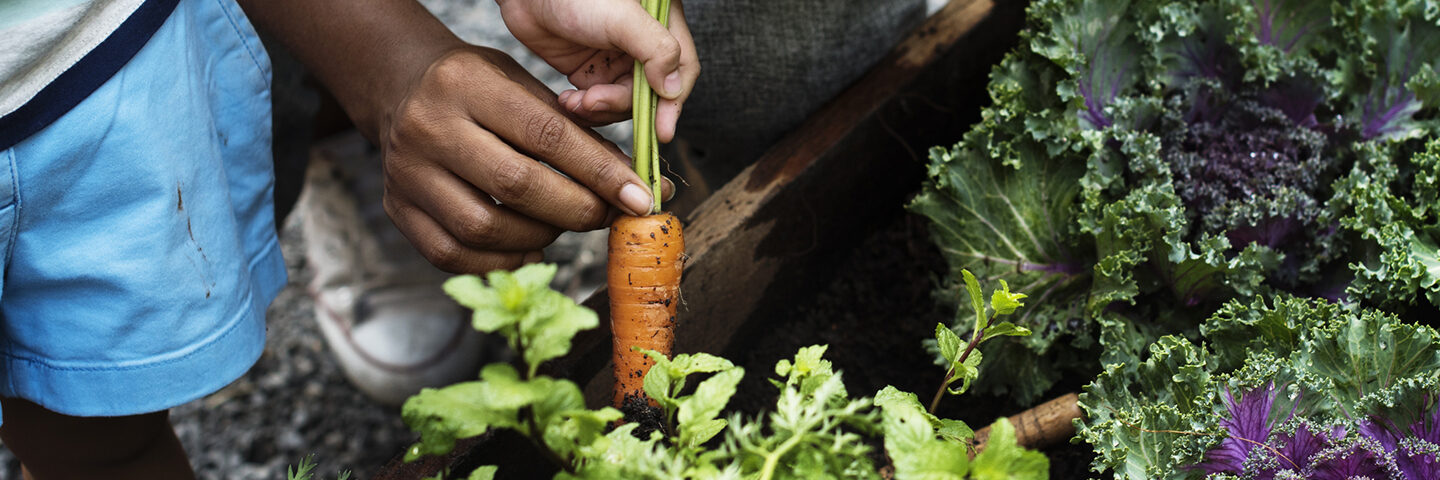
Fruit & Veggie Care
Since childhood we’ve been encouraged to eat more fruits and veggies, yet as adults many of us still don’t get the recommended 5-9 daily servings. Years of research and PBH’s State of the Plate has shown that only about 10% of Americans meet the recommended daily intake of fruits and vegetables, so, we have a lot of room for improvement. Fruits and vegetables are packed with nutrients that benefit our health in many ways, and the more variety of colors we eat, the more nutrients we will be feeding our body with. As a retail dietitian, I often hear from consumers that fruits and vegetables are expensive. They may be depending on what you are buying, the form it is in, and whether it is in season. There are many convenient and budget friendly options available, especially if you can buy in-season items and put your produce to use instead of letting it sit and go to waste.
Learn the farm to table agricultural journey
Try to support your grocery store’s local produce selection when available and learn about the farm it came from. Learning about the growing process helps to develop an appreciation for all the food we can purchase. Or, a fun family activity is to go to a local farm and pick your own produce or visit a local farmers market and hear about their growing process and harvesting process. It is fascinating to me to hear about the long hours, the hard work, and the process of the seed growing into what we eat every day. I also have enjoyed watching my own garden flourish throughout the summer and take so much pride in picking all the veggies that I have grown myself!
Do you have any local farmers markets or local farms that are close to you that can provide you with this farm to table experience?
Food Care = Less Food Waste
We spend a large amount of money throughout the year on food to nourish our own bodies, but many of us end up throwing away a huge portion of food because we forget about it or buy too much of it and it starts to spoil. This not only wastes our hard-earned money, but it also wastes the efforts of the farmers and supply chains that got us that food to buy.
Here are a few tips for minimizing food waste with prepping and storing techniques:
- Have too many herbs growing in your garden or leftover from the store that you don’t know what to do with? Harvest them, wash them, chop them, and freeze them into ice cube trays with some olive oil or vegetable broth or stock. This not only stretches the lifespan of your herbs, but it also saves you time when preparing a future recipe. When you’re needing some extra flavor but are short on time, pull out that ice tray and toss a few cubes in with your pan and let them warm up with your dish.
- Keep a “scraps” bag in your freezer. This is something that I started to do earlier this year instead of throwing it into the garbage can. Whenever I’m prepping my meals, I toss my fruit and veggie scraps, tops, and peels into a gallon zip top bag and keep it in my freezer. We have a big compost bin in the back yard that I have been adding these scraps to all summer for next year’s garden fertilizer. Another idea is to keep only vegetable scraps in their own bag in the freezer and make a tasty soup stock by adding them to a pot with boiling water for tasty homemade soup on a cold winter day.
- Don’t wash your produce until you are about to eat it! It can be tempting to wash all your produce as soon as you get it home. Pre-washed produce tends to get eaten faster than unwashed, but you can make your produce last longer by waiting to wash until you are ready to eat. If you wash your produce and don’t let it dry completely, you will be speed up the ripening process or even mold growth and need to use your items much quicker than you may want.
- Transfer your produce to a tightly sealed container to extend the freshness- bonus points if it is clear! Opaque storage containers often lead to consumers forgetting about the items that are stored within them. Instead, opt for a clear container so you can see what fruits or veggies are waiting to be eaten. This can help you to get many more days of freshness and shelf life compared to storing produce in its original packaging.
Let’s care for our bodies by feeding ourselves with fruits and veggies, but let’s also use them to their greatest potentials by not wasting the hard working efforts of our nation’s farmers and supply chains to get it to our homes.


